On peaches, nectarines, plums, apricots, and pluots, I want all of my fruit within reach. So I prune these stone fruit trees down to a height of about seven feet.
But I also want my trees to make fruit at chest height, and waist height. I want the fruit within reach for my children as well.
In order to achieve this, these trees need renewal or rejuvenation pruning.
What’s rejuvenation pruning?
Rejuvenation pruning involves making cuts to ensure that your tree looks like this:

And not like this:
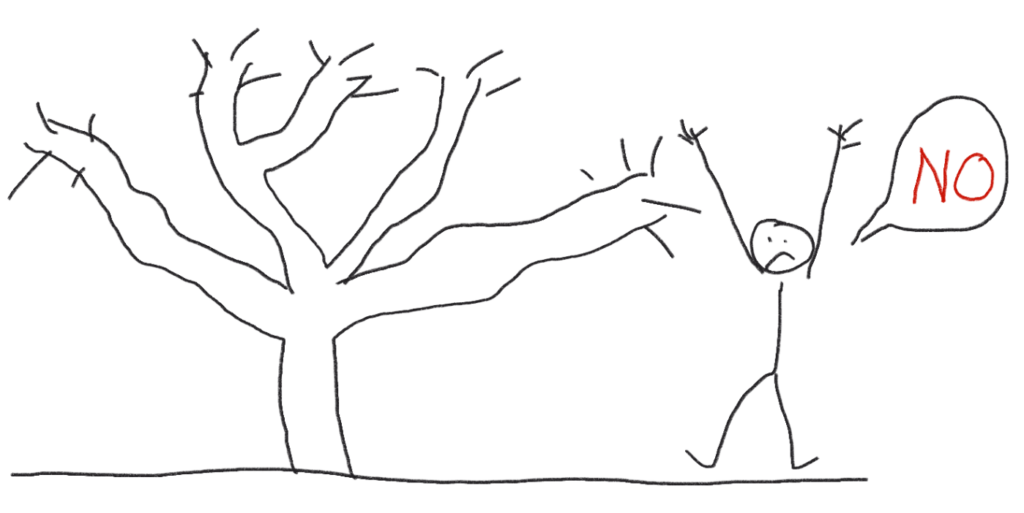
You want two things: One, you want the tree to have branches that taper in diameter. They should start thick at the trunk and get thinner and thinner toward the top and outside of the canopy. And two, you want the tree to have many thin branches throughout its canopy, including down low, because it is only on these thin branches that flowers and fruit form.
How to ensure this with rejuvenation pruning
For the first four or so years that a stone fruit tree is growing in the ground, you can just prune the top of its canopy to keep the height down. However, at around year four, the main branches of the tree will have become too thick too high in the canopy, and the tree will be in danger of looking like the lower drawing shown above. Avoid this by making rejuvenation cuts.
Below is a rejuvenation cut that I made on my nectarine tree:
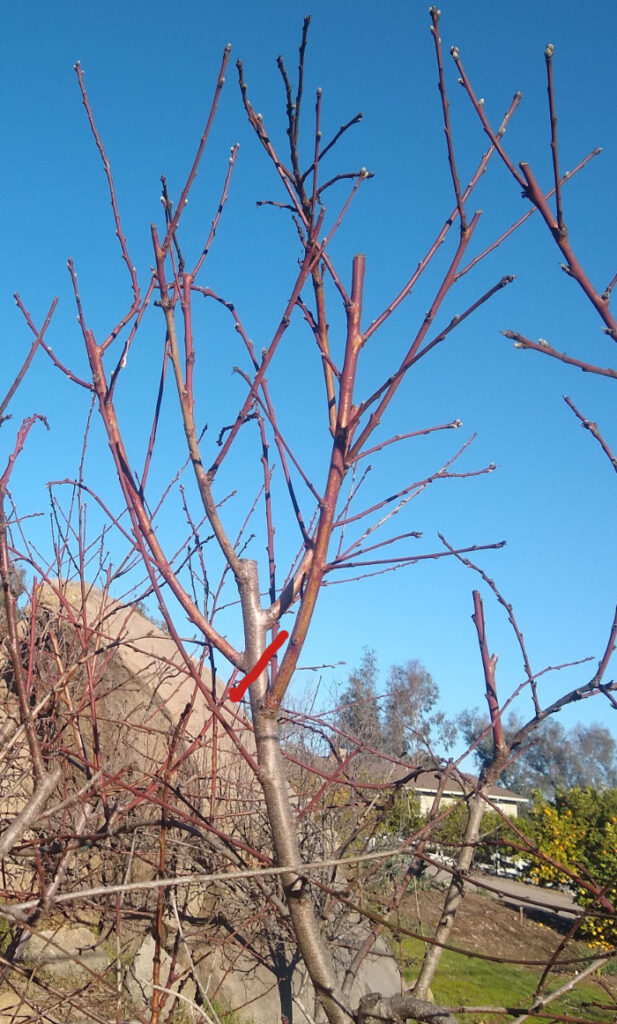
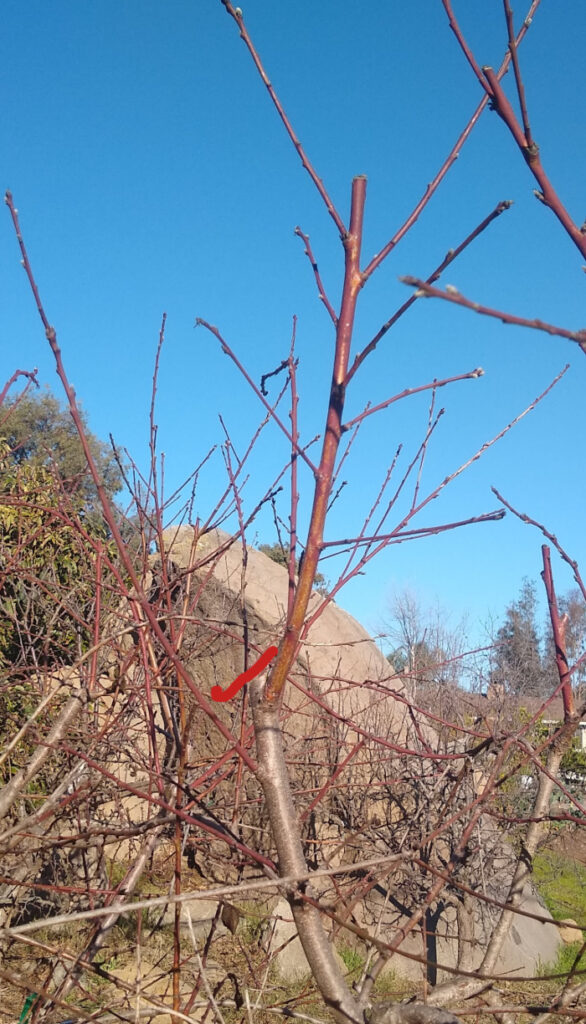
I cut a thick branch back to a thinner branch, thereby removing the thick branch from high in the canopy and allowing the thinner branch to take over that space.
(You can also think of it as cutting an old branch back to a younger branch. On nectarine trees, the age of branches can be judged based on their color. Orange/red and green branches are the youngest, and gray branches are older.)
Why remove thick branches?
On stone fruit trees, as a branch ages its bark thickens. At some point, around four years of age or four inches in diameter, the branch’s bark becomes so thick that new side branches cannot sprout through the bark. Therefore, if the branches are allowed to be thick (old) all the way up to the top or outside of the canopy, your tree eventually looks like this:

So you must make rejuvenation cuts that allow thinner, younger branches to continually be produced throughout the canopy, especially down low.
Past rejuvenation cuts
Below are some rejuvenation cuts I made on stone fruit trees in years past:
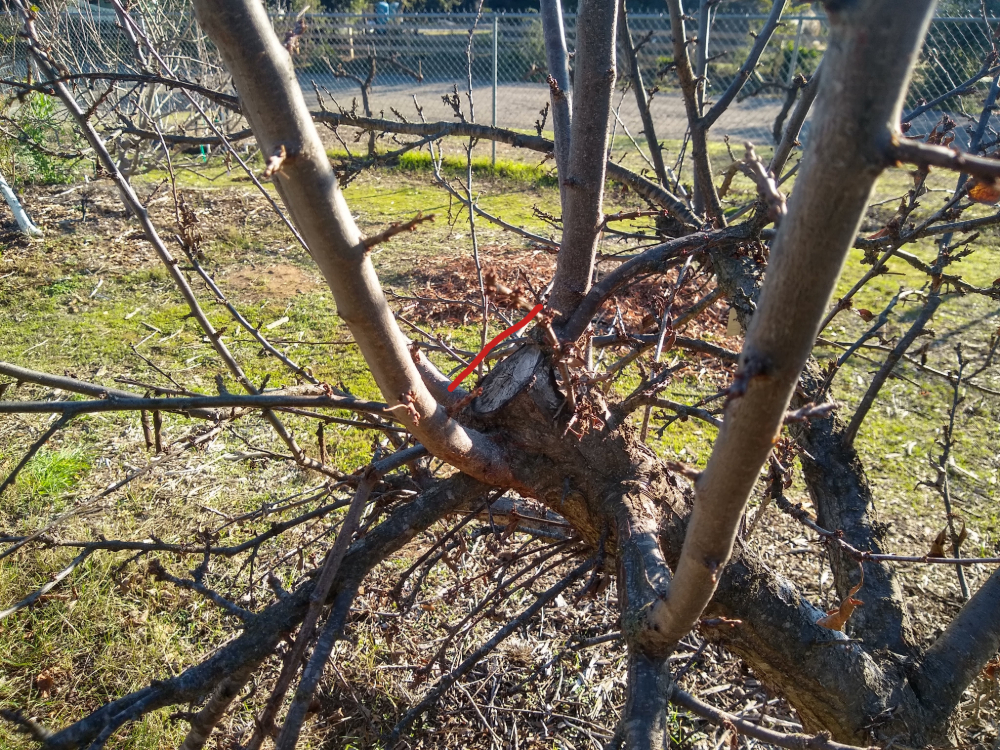
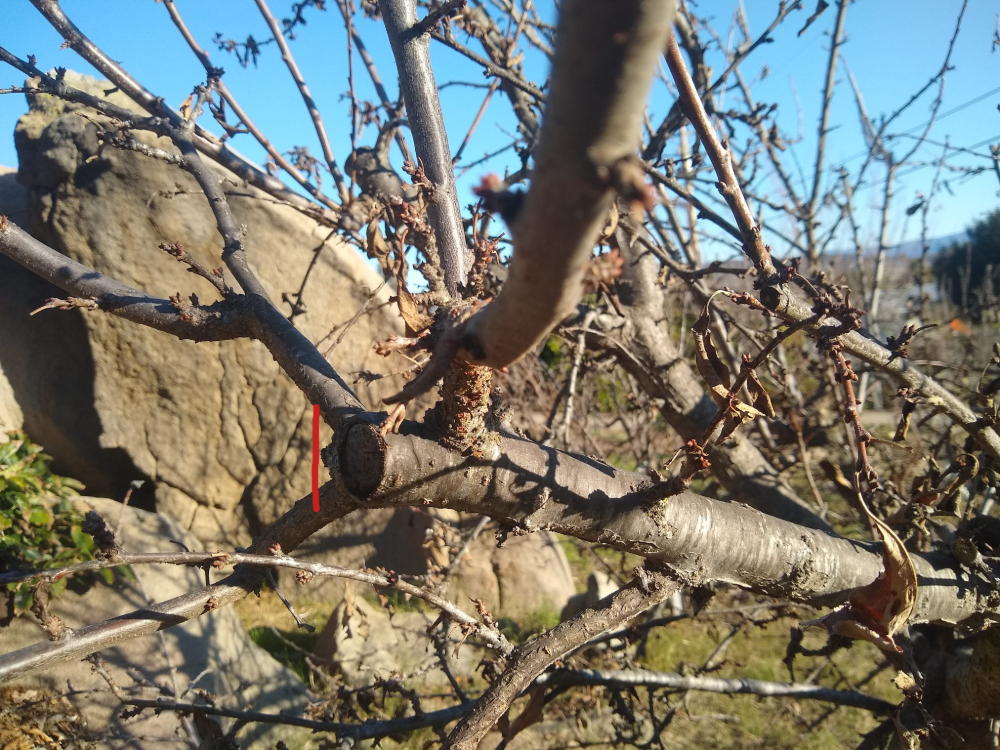
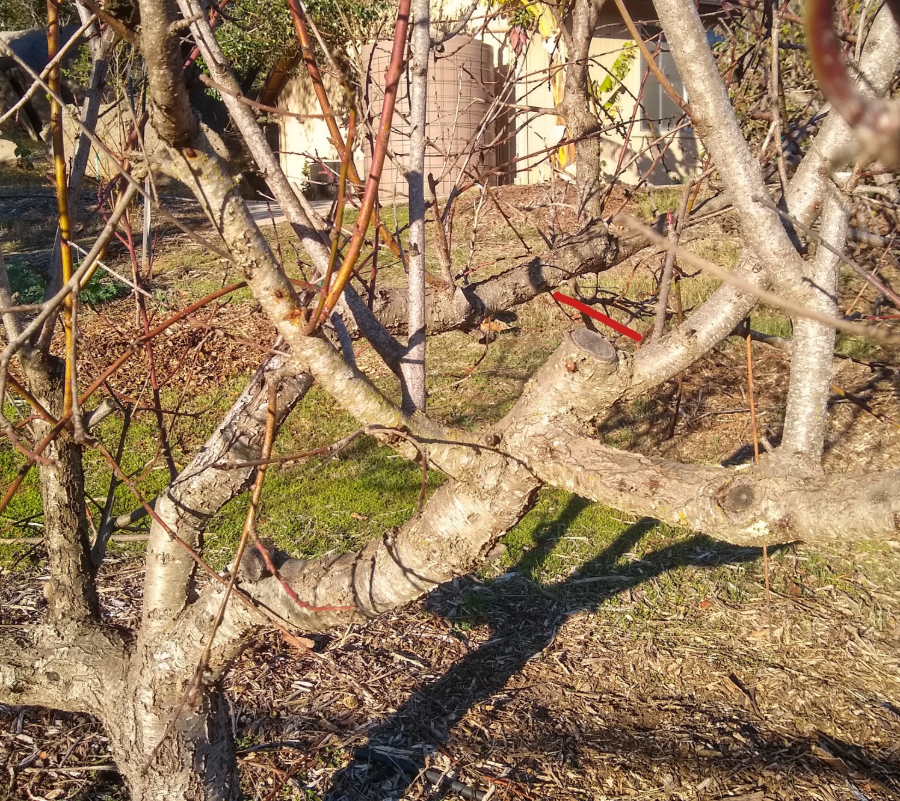
The aim is to have branches incrementally tapering in thickness from the trunk up and out to the canopy edge. This ensures that the tree can continue to make new branches that bear fruit throughout the canopy.
Here are examples of this, showing whole trees, where flowers and fruit will be born from waist height on up:
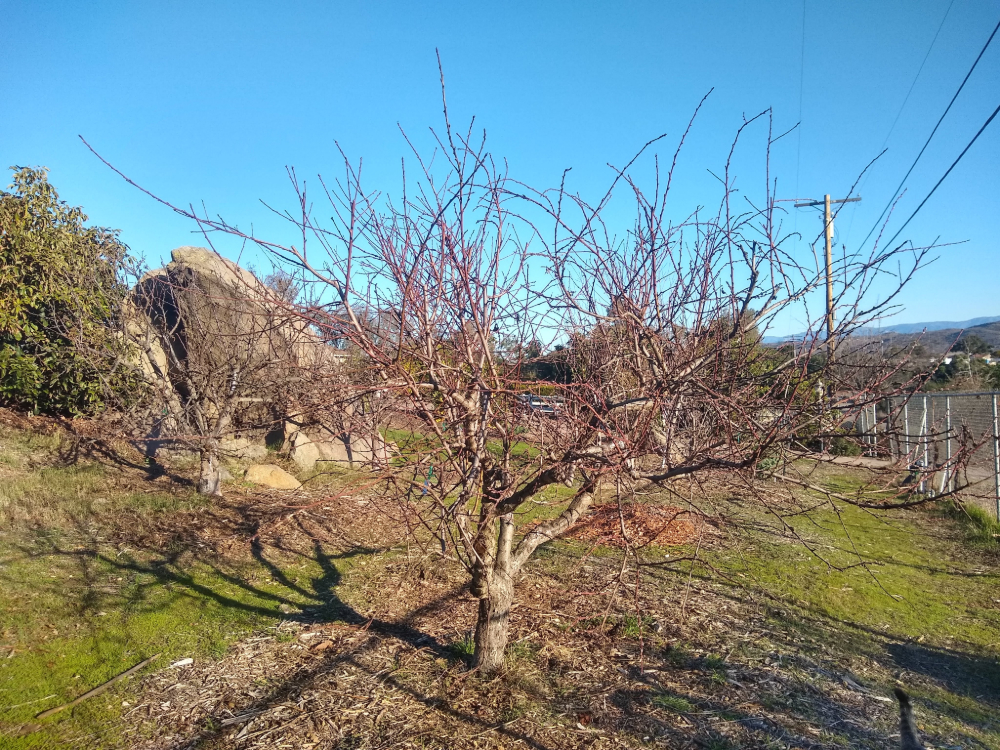
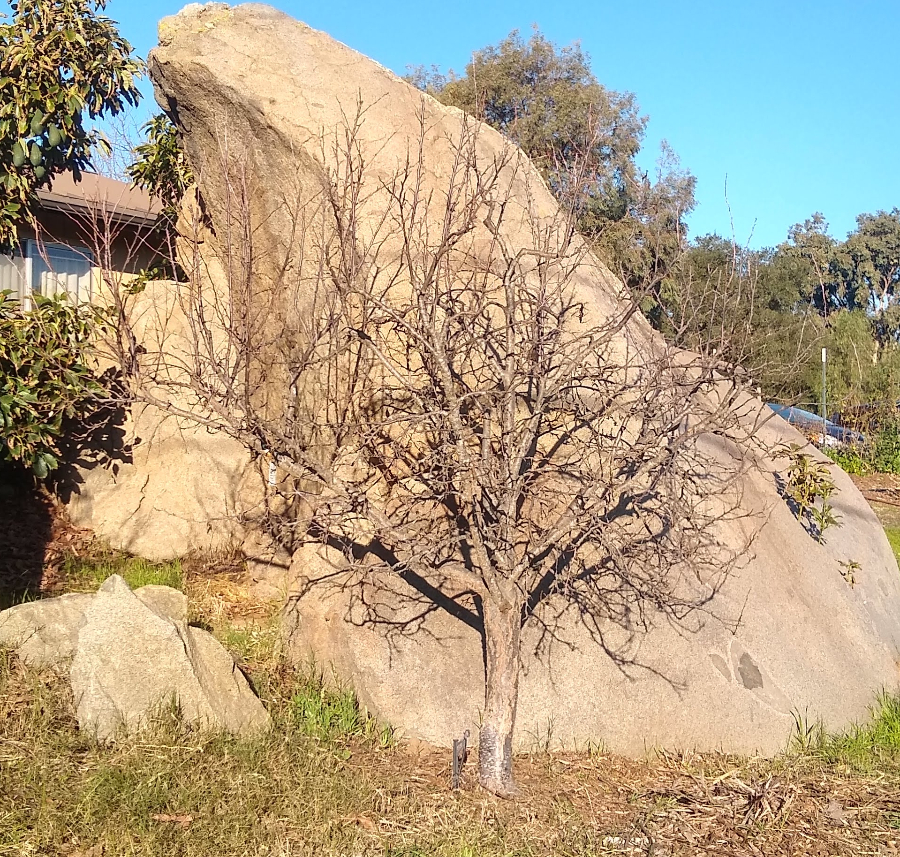
They look similar to the idealized drawing, right?

And here are the results you can expect on such trees.
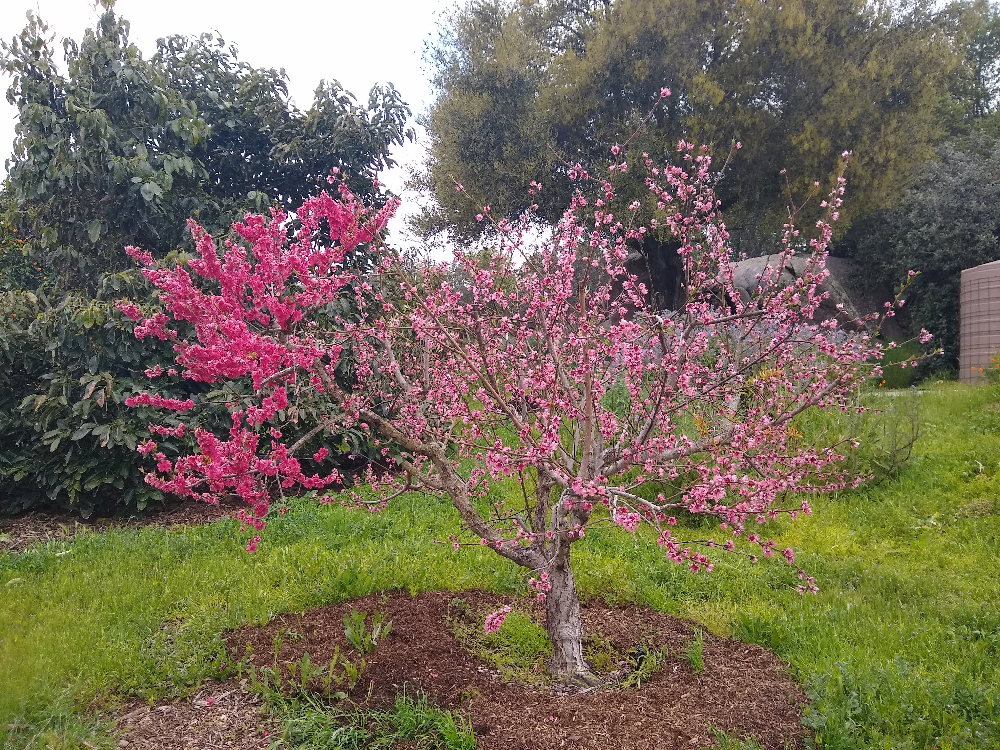
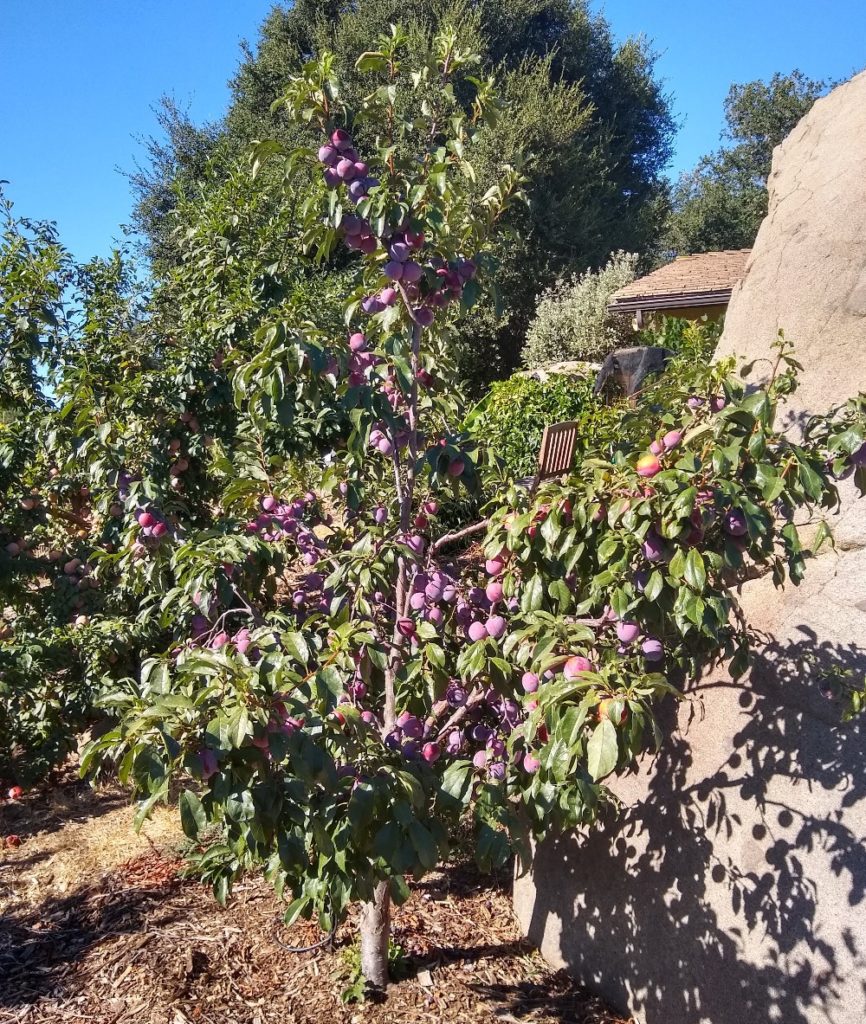
Do you have a stone fruit tree that has been in the ground for more than a couple years and might benefit from rejuvenation pruning?
Thanks for your support of my Yard Posts so I can keep them ad-free.
All Yard Posts are listed HERE

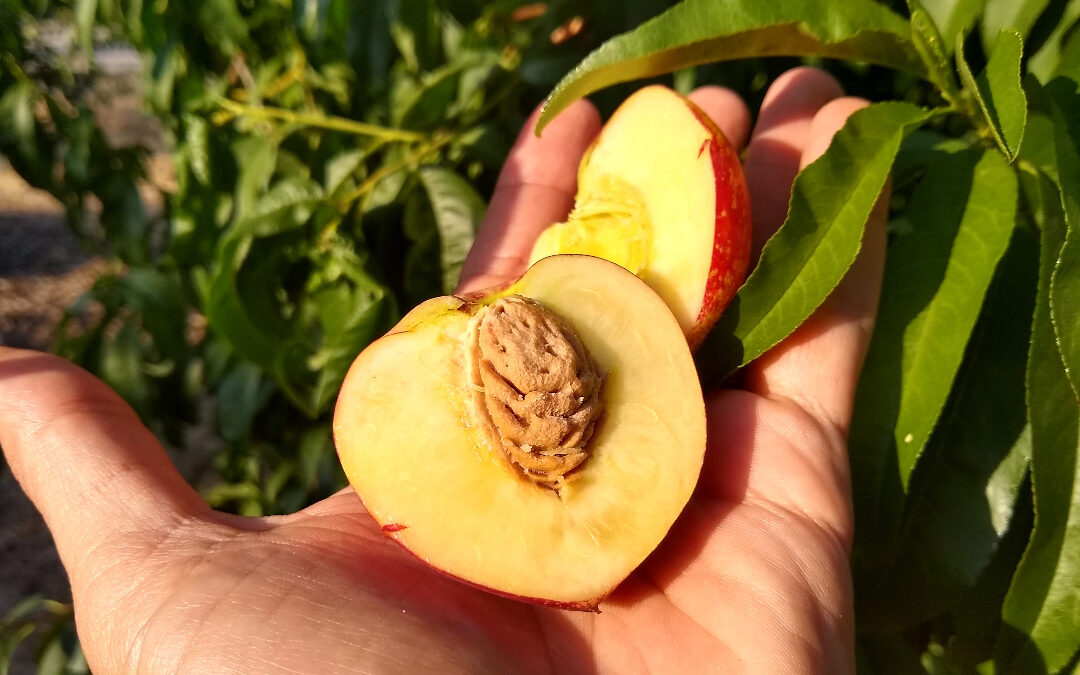


HI Greg. I have a plum tree that can use this kind of pruning. The buds are swelling a tiny bit now here in west Vista. On the bigger cuts, is this only good to do during dormancy or any time? Thx!
Hi David,
Anytime. The sooner, the better. This weekend is perfect.
I applied this to a seedling plum that hasn’t fruited yeat (4 years old as of now) I am hoping the same logic applies to seedling stone fruit! On a hillside in Whittier.
I really need to bring down a nectarine tree that I let get too tall. I tried this with a 3 year old tree that I cut off at knee high (as recommended by the nursery owner promoting “Backyard Orchard Culture” and it never sprouted from the trunk. I don’t want to make that expensive mistake again. I really like that you explained how older wood won’t sprout new growth. I’ll know to look for trees at the nursery that have lower branching or smaller caliper, younger wood if I want to cut it off at knee high.
What is the best strategy for a tree with old, think branches to a height of 6 feet, similar to the “No” model drawn above? Should I cut it at knee high and take some top branches to bark graft on the stump?
Hello,
just came across your site and it has amazing info! Thank you
would you say the same pruning methods for persimmon?
I have a persimmon who has not done much? It gives buds and most fall off, and it also has not grown much?
Also, I will be taking your advice on my stone fruit, but is it too late now? Its pretty warm this week, can I still trim back and prune the thick central trunk on my younger trees?
I live about 3 miles away from the coast so we have thick marine layer most of April and May and June.
Curious. Does pruning it this way encourage water sprouts?
I had read and was told, that apple trees only bear fruit on horizontal branches and you should trim any branch that is growing less than 45 degrees. Does it follow suite on stone fruit trees?